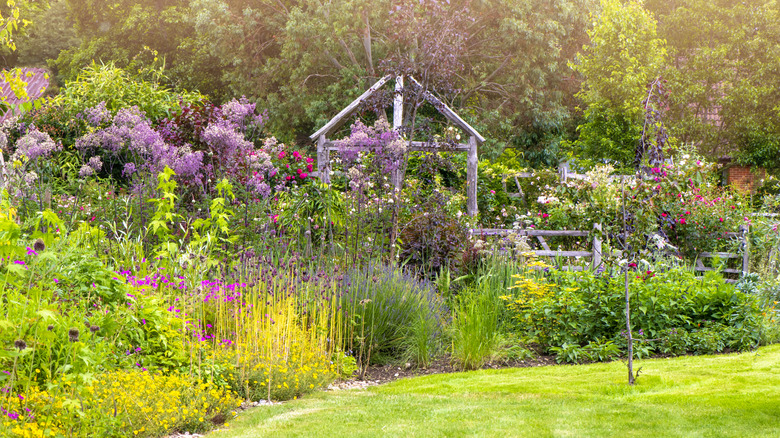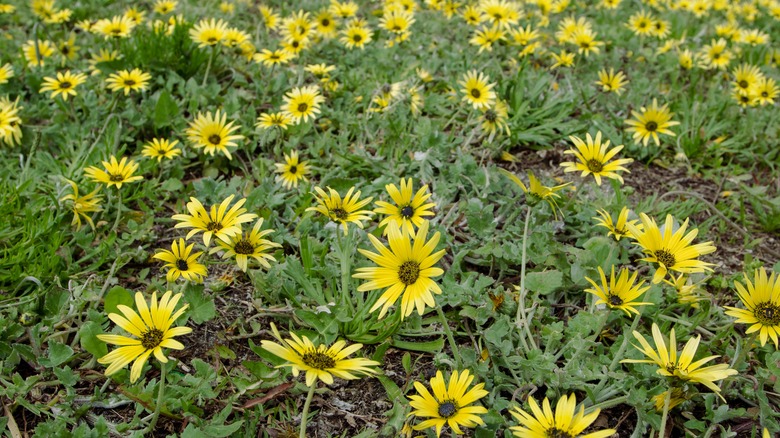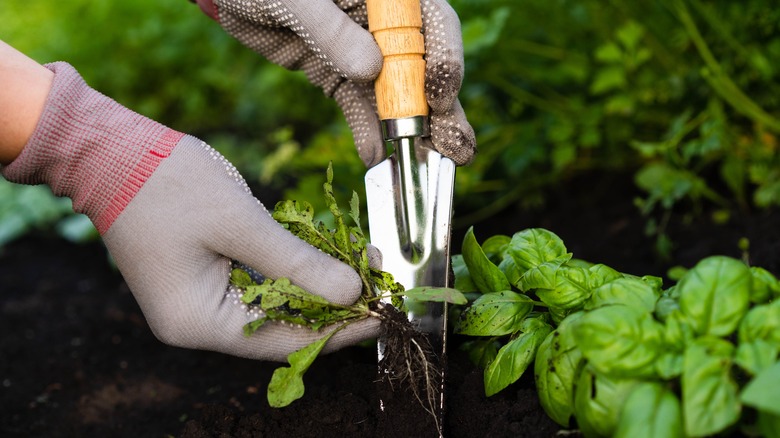This Flowering Weed Resembles Daisies, But It Will Take Over Your Garden
Have you noticed a plant with pretty yellow daisy-like flowers popping up in your garden or lawn? Although you might find the flowers attractive and notice that visiting pollinators such as bees love them, you shouldn't allow this plant to continue to grow because it will take over your garden. The plant is commonly known as capeweed or cape dandelion (Arctotheca calendula), and it's regarded as an invasive weed in the U.S., primarily in California's Central Valley, North, Central, and South Coast regions.
Capeweed is native to the Cape Province in South Africa and has become a problem weed in the U.S. Internationally, it has taken root as well in Australia, Spain, Portugal, Italy, and Chile, and it is also considered a harmful weed in some of these places. Once it takes hold in your garden, it will spread aggressively if you allow it to and will form a dense ground cover over your lawn and garden beds. But you can prevent weeds from taking over your lawn by removing them as soon as you see them. We'll walk you through how to first identify capeweed and then remove it from your lawn or garden before it grows out of control.
How to identify capeweed
Capeweed is a low-growing ground cover plant. It has long, dark green lobed leaves arranged in rosettes. The undersides of the leaves are whitish, as they're covered with a wooly down. The flowers resemble daisies, with yellow petals and much darker yellow centers. Each flower usually has numerous petals that are arranged evenly around the center. These pretty flowers measure approximately 2 inches in diameter.
The problem with capeweed is that it spreads easily through via stolons, also known as runners or above-ground stems. As these grow low along the ground, they put down roots, and this then produces new rosettes of leaves and eventually flowers. Many plants propagate using runners, including strawberries and silverweed, but this spreading habit allows capeweed to form a dense mat of closely grown individual plants that cover the soil and limit any other plants from growing in the same area. Because of the threat this poses to native flora, capeweed is one creeping lawn weed you should keep under control. Although this plant has previously been cultivated and was available in nurseries as a ground cover, you should avoid growing it in your garden due to its invasive tendencies. Most nurseries across the U.S. now no longer sell capeweed as an ornamental plant.
How to remove capeweed from your lawn and garden
If you notice capeweed growing in your lawn or garden, you should act immediately to remove it so that it doesn't have the chance to spread and take over your garden. According to the UC Weed Research & Information Center and the book "Weed Control in Natural Areas in the Western United States," the only effective non-chemical control for capeweed is to dig it out by hand. Mowing alone won't work. But when you dig up the plant, you need to ensure that all parts of the plant, including the leaves and roots, are removed so that it isn't able to regrow and spread. Capeweed produces a long taproot, so you should use a garden tool like a scuffle hoe to effectively dig it out of the ground.
If you want to spray the capeweed plants with a herbicide, it's best to do so before they start flowering and producing seeds. This would ideally be in September through November. But before you reach for a chemical weed killer, why not consider trying a variety of common kitchen ingredients you can use to tackle the weeds in your lawn. You might have to try a few different ingredients and apply these consistently to rid your lawn and garden of capeweed totally.


